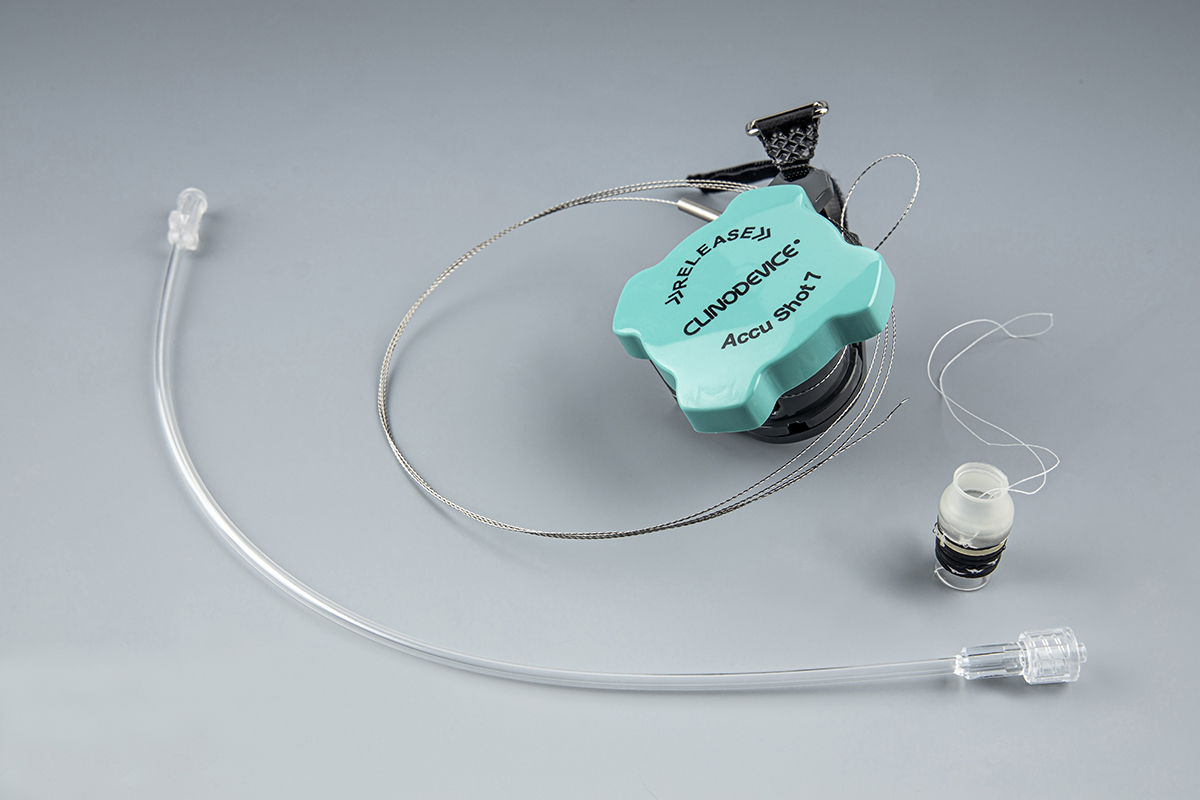15. How is COPD Balloon Therapy performed?
Bronchoscopic treatment is applied in patients with narrowing of the airways and thickening of goblet cells due to chronic bronchitis caused by tobacco exposure. Entering through the intubation tube with a bronchoscope, COPD balloon desquamation is applied to the cell layer covering the inner layer of all accessible airways, primarily the 8 to 3 mm airways, to expel the goblet cells. For this procedure, COPD balloons selected according to the diameter of the bronchi in the respiratory tract are used.
These balloons are inflated and deflated with adjustable pressure and frequency with the help of an electronic pump, bringing the thickened inner layer of the bronchi back to its former thickness by foaming. The latex-free mesh-covered balloon allows the bronchus to reach its original width by converting the thickened goblet cell layer, which causes sputum production in the respiratory tract, into foamy liquid. The foamy goblet cell layer, which turns into foamy sputum, is expelled by aspiration through the bronchoscope channel. In this way, all bronchi in both lungs that can be reached with a bronchoscope are freed from the chronic bronchitis and altered bronchial epithelium layer caused by smoking as a result of COPD balloon.
14. What are the treatment methods for Chronic Obstructive Pulmonary Disease (COPD)?
Current COPD treatment usually involves interventions to reduce the severity of symptoms and discomfort, not to eliminate the disease.
At this point, the first step to be taken for treatment should be to quit smoking, if any, and to move away from environments with air pollution. By quitting smoking, the severity of bronchial obstruction is alleviated to some extent and the person's complaint of shortness of breath is greatly reduced.
13. How is Chronic Obstructive Pulmonary Disease (COPD) diagnosed?
If the person is a smoker, the presence of long-term complaints of shortness of breath, cough and sputum is considered sufficient for the diagnosis of COPD, but a respiratory test evaluation should be performed for a definitive diagnosis. The respiratory assessment test, which is carried out within a few minutes, is performed by the person breathing deeply into the respirator.
This test, which provides easy information about lung capacity and the stage of the disease, if any, should be performed at least once a year, especially for smokers over the age of 40.
12. What is the OPU Needle procedure?
It is used for the collection of eggs that have reached sufficient and desired size in IVF application. It is the needle used for Oocyte aspiration from follicles.
11. What is Band Ligation?

It can be applied if there is mammalization and bleeding in hemorrhoids. Band Ligation is used with an endoscopy device to ligate esophageal varices located above and below the esophageal junction.
10. For what purpose is The Bile Sludge Removal Balloon Tube used?
The Stone Removal Balloon Tube is used to remove stones from the bile ducts. Gallbladder Sludge Removal Tube is used to remove sludge and stones from the bile ducts.
9. What is the Embolectomy Tube procedure?
Embolectomy Tubes are used for the safe and comfortable removal of thrombobolic material from arteries and veins. It consists of a tube and a balloon at the end, which is used to remove arterial emboli and thrombi by inflating and retracting it after it enters the vessel.
8. What is the EUS procedure?
The EUS procedure is an imaging procedure that can easily detect the nature and stage of masses and lesions hidden behind the walls of organs such as the stomach, intestines, esophagus, gallbladder and pancreas that make up the digestive system. Ultrasound is used for fine needle aspiration sampling of targeted gastrointestinal lesions using the accessory channel of the endoscope.
7. What is the EBUS procedure?
The EBUS is used to obtain samples by fine needle aspiration from enlarged lymph nodes or lesions adjacent to the central airways, especially in areas of the chest cavity that cannot be reached by normal bronchoscopy.
6. Is Balloon HSG X-ray a painful procedure?
HSG is a moderately painful procedure. However, this pain is short-lived and not unbearable. The intensity of the pain varies according to the individual. Especially during the administration of medication, there is a reaction and contractions in the uterus against this foreign substance. Because of this pain, the tubes may sometimes spasm and normally open tubes may appear to be closed.
5. In which cases is HSG (medicated uterine film) requested?
The most common reason for use is infertility. HSG uterine X-ray shows whether the tubes are open and whether there are any structural defects in the uterus. For this reason, it is requested to determine tubal blockage in women who cannot have children. Despite advances in imaging techniques, the method that best shows the permeability of the tubes is the medicated uterine X-ray, HSG.
4. What is an HSG procedure?
HSG procedure (medicated uterine film) is a diagnostic method used to examine the uterus and tubes radiographically by injecting contrast material into the uterus and tubes.
3. Is there an age limit for enteral feeding probe use?
There is no upper age limit for the product, but the lower age limit is set as 2. However, age-based practice should be assessed by the professional according to the child's physical development.
2. To which patients is the enteral nutrition probe applied?
It is applied to patients with swallowing difficulties, patients who cannot be fed, patients who need medication administration and patients with problems related to the gastrointestinal system.
1. Why is an enteral feeding tube inserted?
Enteral Feeding Tube is used to administer fluids and/or medication through the nasoenteric route in patients who are physically unable to get adequate nutrition through normal chewing and swallowing. The feeding tube passes through the nose, pharynx and esophagus and ends in the stomach, providing nutrition through ports at the end. Enteral feeding tube is applied when the doctor deems it necessary.

